
Scientists have convinced us that the night sky remains consistent and unchanging. For generations, sailors have relied on fixed star formations to navigate their ships. The constellations we observe today are the same ones that have been identified by astronomers for thousands of years. However, what if our observations have been insufficient? Recent findings suggest that the celestial sky has undergone significant transformations in the past century.
A magnificent undertaking
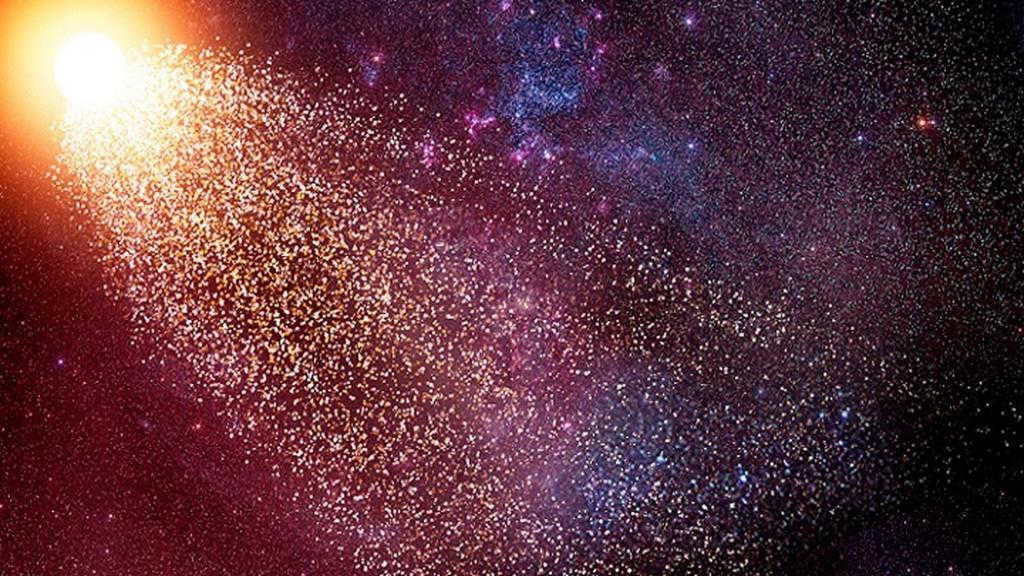
A team of astronomers is embarking on a project called Disappearing and Emerging Sources During a Century of Observing. By comparing surveys spanning 70 years with recent images of the nocturnal sky, they are able to monitor any changes that may occur. After years of meticulous research, they have recently unveiled their initial discoveries in the Astronomical Journal.
It appears that at least 100 points of luminosity that were visible in the sky during the mid-20th century have now faded away. These extinguished sources of light could represent momentary flashes or the complete vanishing of a celestial entity. The researchers emphasize that although their preliminary results are highly likely to be accurate, they do not provide the full picture.

VASCO is a project that combines both cosmic and traditional astrophysics. According to Beatriz Villarroel, a researcher at the Nordic Institute for Theoretical Physics and co-author of the recent paper, stars tend to explode when they burn up. This explosion produces a bright flash that is easily noticeable, especially with our modern capabilities.
This discovery suggests the possibility of stars dying in unexpected ways, or even the presence of an advanced civilization using solar panels to block their sun. Either scenario would be an exciting and significant finding. Villarroel suggests that if we are searching for aliens, we should be open to the possibility of something truly unusual.
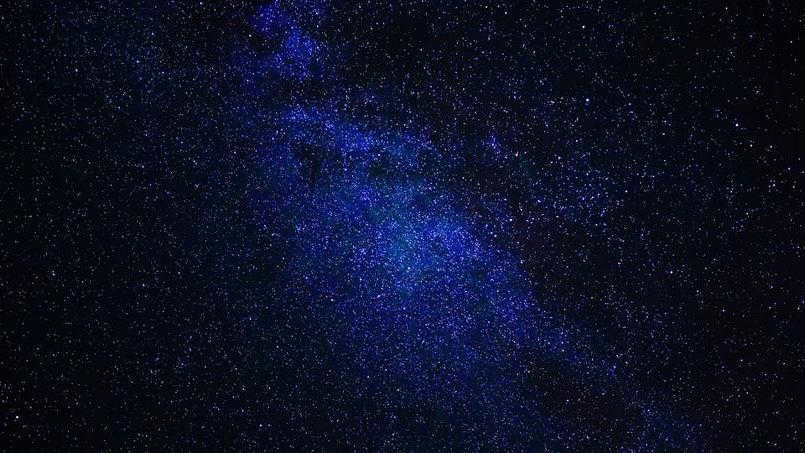
Collaborating with a group of approximately 20 astronomers and astrophysicists, the researchers conducted a comparison of a series of celestial images captured since 1949 with data obtained from the Panoramic Survey and Rapid Response System (Pan-STARRS) telescope during the period from 2010 to 2014.
Employing cutting-edge software, the team identified roughly 150,000 stars that seemed to have vanished. They cross-referenced these missing sources with images from other data collections. Ultimately, they meticulously examined the remaining 24,000 stars in order to distinguish genuine celestial objects from camera malfunctions. Ultimately, they discovered approximately 100 sources that had genuinely disappeared without a trace.
Nothing lasts forever

If further observations confirm the reality of the disappearances, it would be a groundbreaking discovery in the field of science. This would provide evidence that even a constant source of light can eventually fade away. For a long time, enthusiasts of SETI have speculated about the existence of extraterrestrial civilizations possessing god-like abilities to capture starlight and shield it from our view. However, this notion has thus far been deemed absurd.
Despite the initial results not being particularly encouraging, Villarroel once again emphasizes that it is premature to start imagining the end of the world.
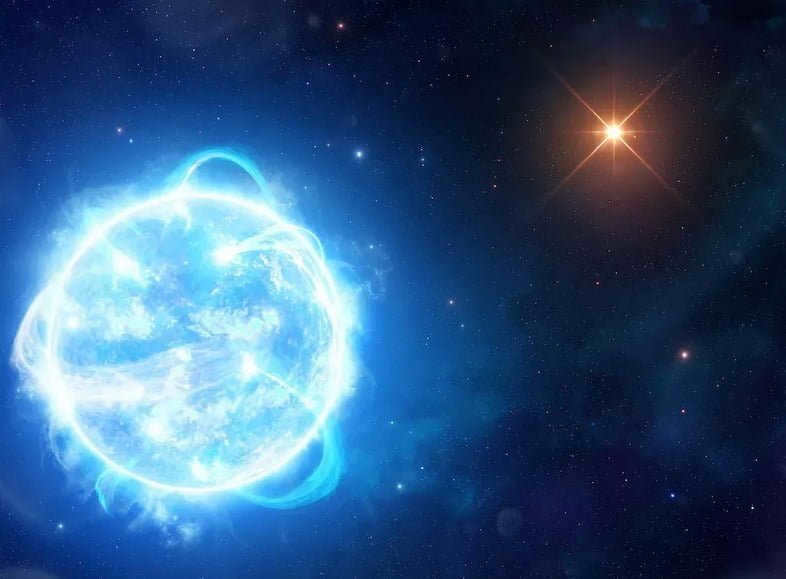
Stars do not simply vanish – or do they? For centuries, astronomers have accepted the belief that the luminous objects in the sky remain constant and unchanging. Even after it became evident that these celestial bodies are actually tangible entities similar to the sun, one of the fundamental assumptions made by astrophysicists was that they experience significant alterations at an extremely gradual pace, spanning millions or billions of years.
However, when it comes to the most massive stars, which outweigh the Sun by a considerable margin, they do experience abrupt and catastrophic transformations as they approach the end of their life cycle. The conclusion of their existence is accompanied by the dazzling brilliance of a supernova explosion, which radiates for several months and might even be observable from hundreds of millions of light-years away. (1)
However, what if certain stars were to vanish from sight unexpectedly? Based on our current understanding of stars, this would seem to be an implausible scenario. Nevertheless, in recent years, a team of astronomers has embarked on a mission to investigate the validity of such seemingly impossible occurrences by meticulously analyzing decades’ worth of observational data.
“VASCO” (English. Vanishing and Appearing Sources during a Century of Observations) is the project known as Vanishing and Appearing Sources during a Century of Observations, according to Beatriz Villarroel from the Nordic Institute for Theoretical Physics in Sweden. She explains, “Our interest lies in various objects that vanish, but ideally, I hope to discover a star that has remained stable and visible in the sky for as long as we have records and data, only to suddenly vanish one day. At that point, we can use the largest telescopes in the world to observe it and find absolutely nothing.”
Ever since 2017, Villarroel and her team have been working on an exciting project that has caught the attention of many scientists. The project involves the search for historical records, and it has sparked the interest of astronomers and experts in various fields. These professionals include those who specialize in active galactic nuclei, which are the energy source for brightly shining quasars in the distant universe. There are also stellar physicists and scientists involved in the search for extraterrestrial intelligence (SETI). Each individual has their own unique reasons for participating in this fascinating endeavor. (2)
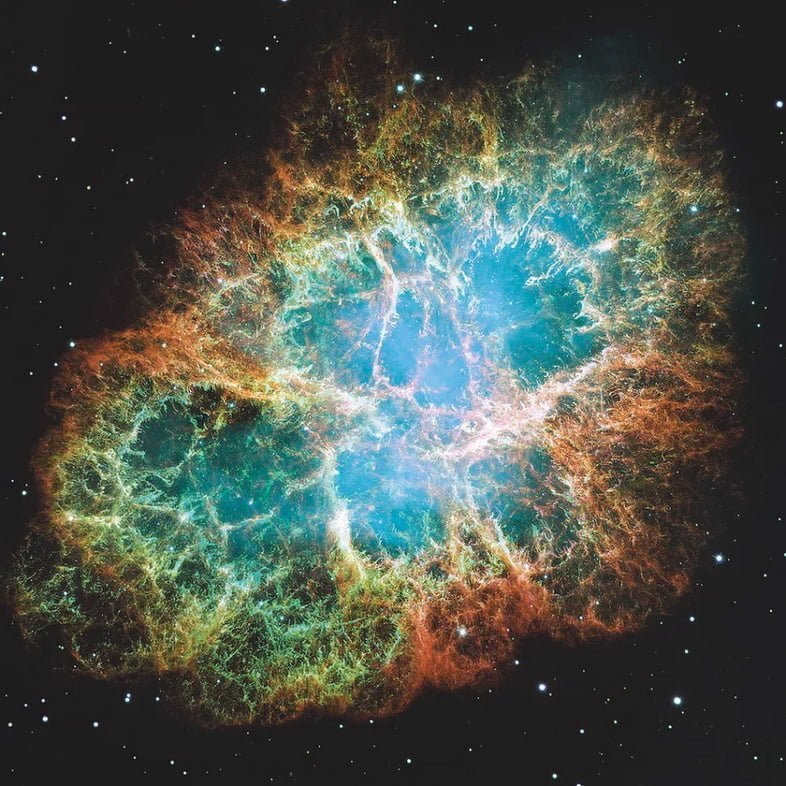
Supernovae are the result of the collapse of massive stars, and they are incredibly bright, often outshining entire galaxies for extended periods of time. These events leave behind superheated remnants. (Image provided by: NASA, ESA)
Although our current understanding of stars suggests that they change slowly and that their disappearances should leave some trace, not all stars shine continuously. There are actually many variable stars in the sky that pulsate and change in brightness. However, VASCO, according to Villarroel, is something entirely different. “While we are aware of variable stars, their fluctuations typically occur over a few years at most. We are searching for a star that transitions from complete stability to total extinction – a phenomenon that has not yet been observed and could potentially reveal new insights into physics,” Villarroel explained.
The Sky Cataloging Process
In recent times, there has been a development of automated telescopes that possess the capability to catalog the entire sky at a speed that was once unimaginable to previous generations of astronomers. One such example is the Zwicky Transient Facility (ZTF) located at Mount Palomar in California. This facility combines a state-of-the-art camera with the renowned Samuel Oschin Telescope (3, 4).
Thanks to its ultra-wide field of view, the ZTF can observe the entire Palomar sky in just three nights, conducting two scans of the Milky Way plane every night. This significantly enhances the chances of identifying sporadic transients – brief bursts of light that may be caused by intense stellar flares on distant stars, as well as potentially indicating some of the most exceptional and uncommon occurrences in the Universe, such as enigmatic gamma-ray bursts (5, 6).
Nevertheless, there exists a significant distinction between detecting stars that manifest and those that vanish, according to Villarroel’s emphasis. “Undertakings like ZTF operate on exceptionally brief timescales, but if you encounter an exceedingly rare occurrence in which something vanishes from the celestial sphere every century, then an extensive timeframe would be required for its observation. In our scenario, we strive to uncover a star that has disappeared – or perhaps emerged – employing the most extensive possible timeframe in conjunction with the most reliable historical catalogs.”
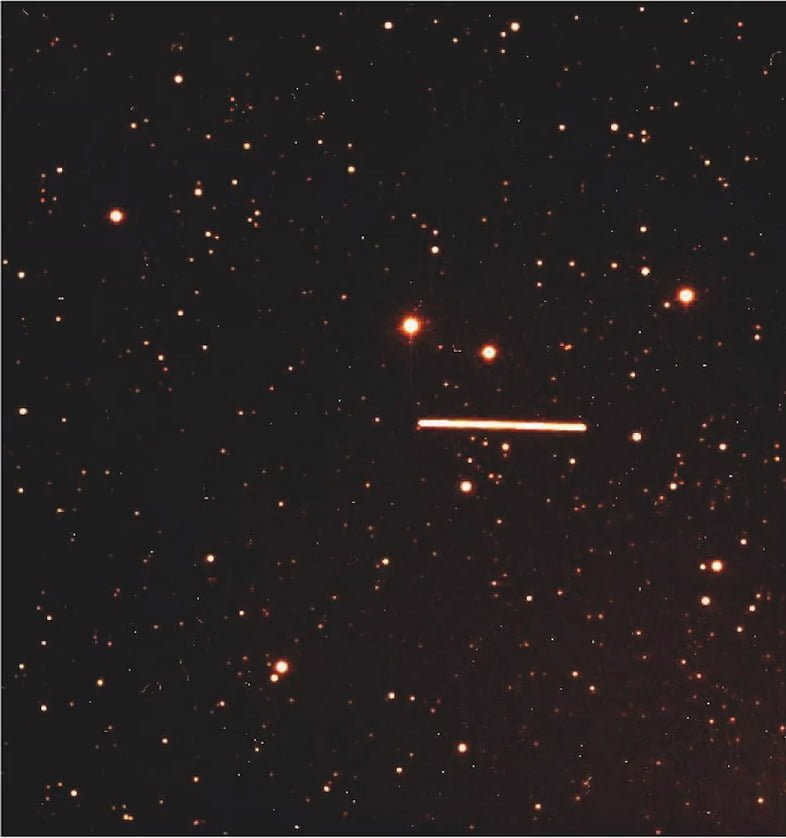
USNO’s imaging plates were created before the era of space exploration, and the exposures are large enough to differentiate asteroids from short star trails. (Image provided: ESO)
“All of this footage is readily accessible, completely digitized, and available online,” Villarroel explained. “Our IT team at Uppsala University has designed a user-friendly scientific website at ml-blink.org, where you can simply click and merge images. We have enlisted the help of computer game developers to enhance the website’s aesthetics, and we are also in the process of developing artificial intelligence.”
There are multiple methods available to resolve the issue – regardless of the information provided by the data! The main idea is that individuals who are interested can visit the platform to compare images. If they are genuinely curious about a particular case, they have the option to leave a comment, and we will reach out to them to inform them of their candidate. However, there is a significant amount of work that needs to be done before we can achieve accuracy.”
Each item listed in the USNO catalog that is marked as not having a clear counterpart in the Pan-STARRS data must undergo examination and confirmation by the team. The researchers then analyze the shape, brightness, and other characteristics to determine if it is a flaw in the photographic plates from the original survey.
“It is impossible to guarantee that it is not a plate defect,” explained Villarroel. “However, there are several tests that can be conducted to eliminate the most obvious possibilities. After that, more thorough investigations can be carried out using resources such as the Sloan Digital Sky Survey (SDSS) or the recently launched Dark Energy Camera Legacy Survey, in order to search for any traces of the object. Depending on the findings, different types of candidates can be identified.” (8)
In addition, the team is cross-referencing the candidates with data obtained from the European Space Agency’s Gaia telescope, which is currently gathering precise information about over a billion stars in the Milky Way. (9)
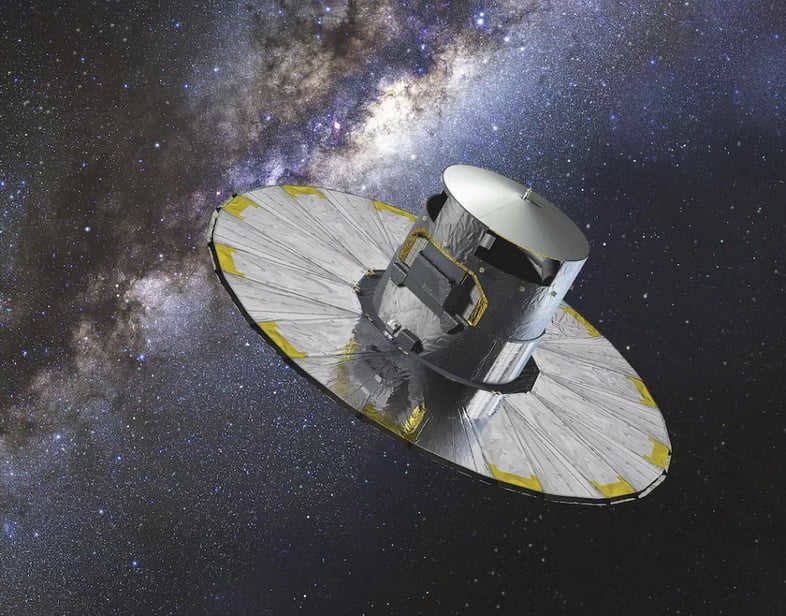
Scientists at VASCO are utilizing data from the Gaia space observatory operated by the European Space Agency to verify potential “vanished” stars. (Image courtesy of: ESA)
Promising prospects
Thus far, the survey has detected over 800 stars that appear to have gone missing, and numerous of these necessitate further analysis and investigation. While there is no ideal specimen for Villarroel – the disappearance of a stable, long-lasting star – many of the identified candidates still possess noteworthy characteristics.
Unlikely possibilities for the source of these signals include variable stars and cataclysmic variables or novae – explosions that occur on the surface of white dwarfs in double star systems. Neither of these sources is in close proximity to a known variable, and if there was a companion star in a system with novae, it should be faintly visible in modern surveys, even if the white dwarf itself is not visible. (11, 12, 13)
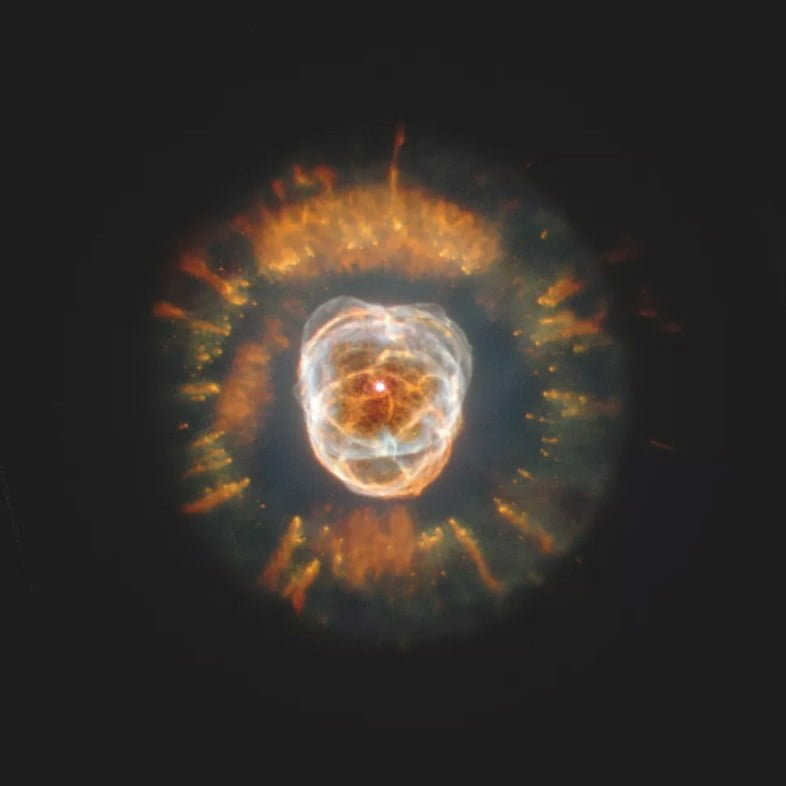

Aging red giant stars have the ability to “diminish” as they shed their outer layers and transition into white dwarfs, although this transformation can take hundreds of thousands of years and give rise to a distinct planetary nebula. (Image courtesy of: NASA, ESA)
“There is a potential explanation that it may be an optical remnant resulting from gamma-ray bursts or fast radio bursts,” Villarroel suggested. The origins of these intense cosmic outbursts with high energy levels remain largely unknown, but it is commonly assumed that they undergo a brief period of visibility as their energy output diminishes. (14)
“These flares are expected to have extremely high amplitudes of approximately eight to ten magnitudes, but they disappear within minutes and do not appear to have any visible evidence when observed with large telescopes. However, it should be noted that there is still a significant amount of work to be done with the 800 candidates, and it is likely that they consist of a mixed group of objects of various types,” she stated.
If it is discovered that these 800 candidates include a star that fades perfectly, what could be a potential explanation?
One potential explanation could be a “failed” supernova, which is a massive star with a core so large that it collapses into a black hole and consumes the remaining part of the star from within. This process cuts off the flow of nuclear fusion that typically accompanies a supernova explosion, resulting in no visible remnants. (15, 16)
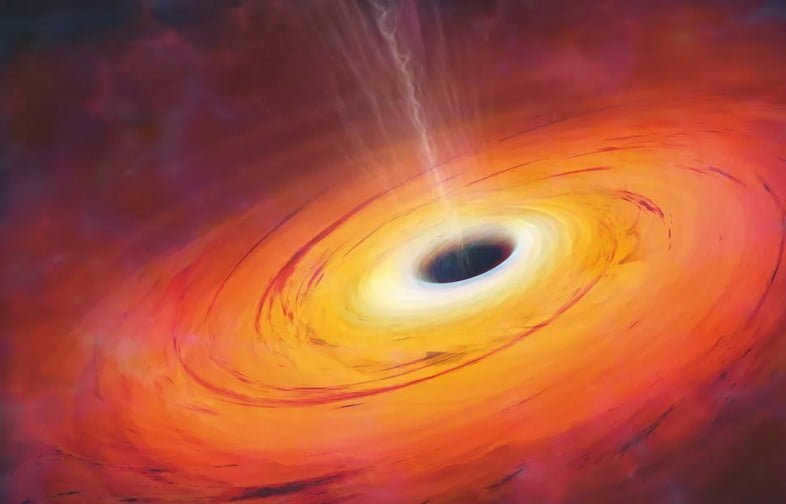
Stars in the Milky Way have the potential to develop black holes at their centers. (Image courtesy of: Getty Images)
However, Villarroel is skeptical of this explanation, as she calculates that these occurrences should only happen once every three centuries in our galaxy. Therefore, it is unlikely that the VASCO project would accidentally come across one.
Potential forthcoming findings
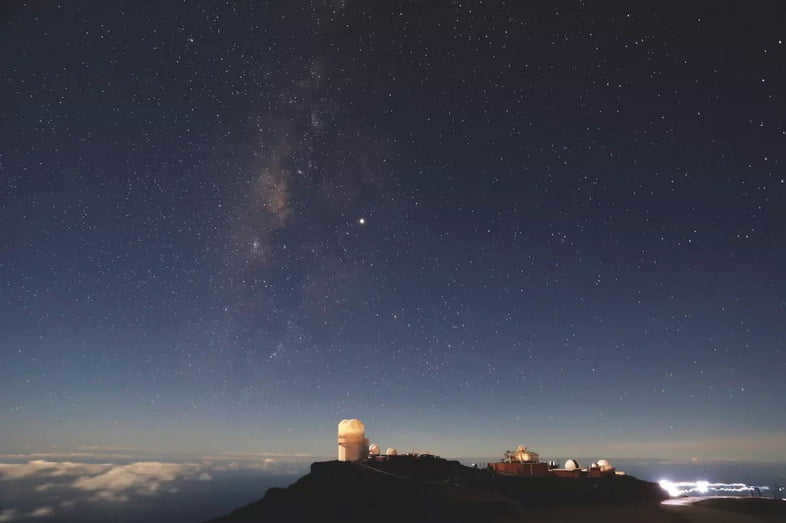
The Pan-STARRS survey telescopes located at the Haleakala Observatory on the beautiful Hawaiian island of Maui. (Image provided by: Getty Images)
With advancements in telescope technology and computing capabilities, the field of astronomy has entered the age of “big data.” Many SETI scientists believe that the discovery of extraterrestrial life is more likely to come from observing peculiar behavior exhibited by stars and other celestial objects, rather than from purposely or accidentally directed radio signals sent by aliens. (17)
According to the theory, if civilizations reach a certain level of advancement, it is probable that some of them will acquire the technological capabilities needed for stellar engineering, resulting in changes in the appearance of stars in various unexplained manners. The Dyson Sphere serves as a prime illustration of this concept – a ring of power plants orbiting a star, designed to extract energy from it in the most efficient manner possible. (18)

An advanced extraterrestrial civilization with highly developed technology might have been responsible for the disappearance of stars through various means, such as obstructing their light by enveloping them with Dyson spheres. (Image courtesy of: Alamy)
According to the Third Law proposed by science fiction writer Arthur C. Clarke, “any technology that is sufficiently advanced is indistinguishable from magic.” If no natural explanation for the vanishing of the star could be found, the intervention of intelligent extraterrestrial beings could appear more plausible than supernatural forces. (19)
The team has identified some red transients, but there is a possibility that they may have an artificial cause. The initial hypotheses are natural, but if we consider the possibility of extraterrestrial activity, a laser beam could potentially produce a similar red transient. (20)

One intriguing possibility is that the vanishing “stars” are indeed massive spacecrafts traversing through the cosmos, implying that they might not be absent but simply in motion. (Image provided by: Getty Images)
Even though Villarroel alludes to thrilling discoveries that have already surfaced from the data and are awaiting official publication, the VASCO project persists in the meantime. Numerous of the potential candidates that have been identified thus far are still pending proper confirmation and analysis, and only 25% of the celestial sphere has actually been verified. We anticipate that further advancement will be expedited with the involvement of more volunteer scientists and the implementation of novel automation techniques currently being developed in conjunction with the Spanish Virtual Observatory.
“We are unaware of any mechanism through which a star could merely vanish, excluding the possibility of a theoretical failed supernova,” Villarroel ponders. “Thus, the phenomenon of disappearing stars becomes captivating due to its lack of observation in the natural world. The fundamental concept was to seek out phenomena that we consider to be impossible.”
For over 15 years, he has been employed as an environmental and science journalist. He covers topics such as science, culture, space, and sustainability. Additionally, he works as a freelance writer for the website Knowledge is Light.
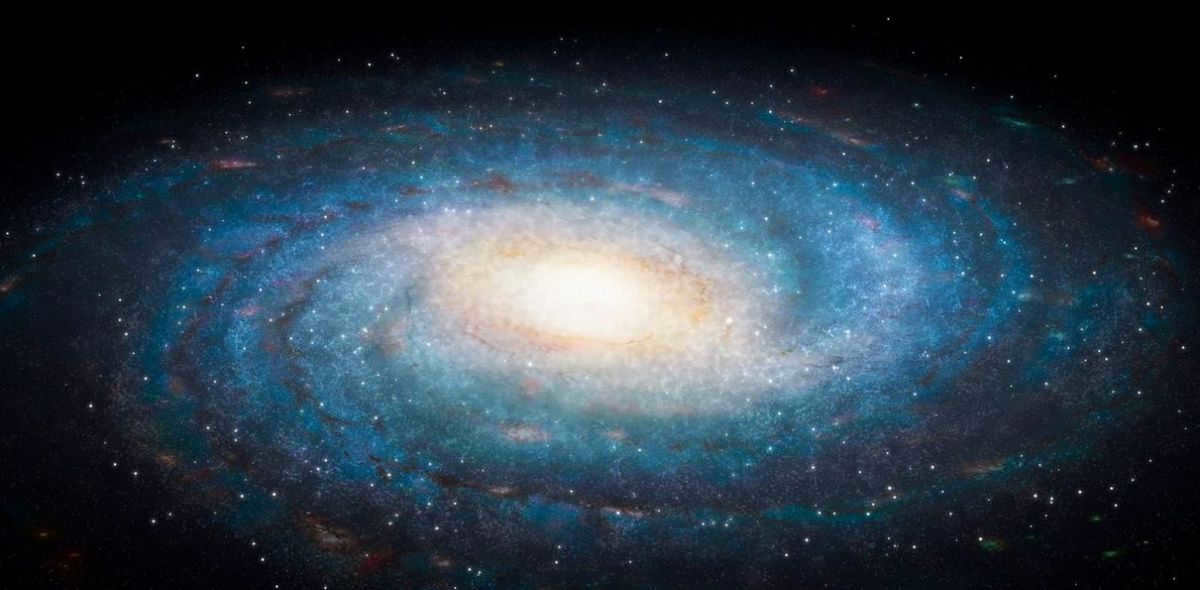
A fascinating anomaly has been detected close to Sagittarius A*, the gigantic black hole situated at the core of the Milky Way: a “no-go zone” where certain S stars are curiously missing. This finding, examined through computational models, questions our comprehension of galactic dynamics and could potentially give rise to fresh theories regarding the composition of the Universe.
This occurrence has resulted in the discovery of an enigmatic “avoidance zone”. A group of scientists from the University Observatory of Munich embarked on a mission to comprehend this phenomenon. Utilizing sophisticated numerical simulations, the researchers aimed to simulate the movements of stars in the vicinity of Sagittarius A*. Their objective was to shed light on the apparent lack of certain celestial objects. This preliminary study paves the way for novel theories regarding the dynamics of our galaxy. The study can be accessed on the arXiv platform.
Astronomical Enigma: S-type Stars
S-type stars, a unique cluster of approximately 200 celestial bodies, inhabit the vicinity of Sagittarius A*. Their close proximity to this enigmatic black hole, coupled with their peculiar orbital behavior, renders them an intriguing subject of study for astronomers. The existence of these stellar entities remains shrouded in mystery.
Giving consideration to the immense gravitational pull exerted by the black hole, it would be logical to assume that these stars would succumb to its gravitational force and be inexorably drawn into Sagittarius A*. However, remarkably, these stars maintain stable orbits despite their close proximity to the black hole. This perplexing phenomenon defies our current comprehension of stellar dynamics, thereby prompting inquiries concerning the forces and mechanisms that enable these stars to withstand the gravitational allure of the black hole.
The mystery of the avoidance zone
Astronomers have made a puzzling discovery regarding a group of stars known as the avoidance zone. It seems that there are some stars missing from this group, which goes against what one would expect based on random distribution.
Current models of galactic dynamics, which take into account the laws of gravity and the interactions between stars and the supermassive black hole, predict this kind of distribution. However, the observations challenge these models and raise the possibility that there are unknown forces or processes at play in the center of the Milky Way.
The significance of numerical modeling in the investigation of galaxies
The scientists conducting the research utilized numerical modeling, a valuable tool in the field of astronomy. This technique enables researchers to develop computer-based representations to imitate the movements of stars, galaxies, and even the entire universe. These simulations can be adjusted and manipulated to assess different theories, providing a virtual laboratory for studying the cosmos.
In the case of S-type stars and the enigmatic “avoidance zone,” the team successfully constructed models of the star distribution around Sagittarius A* and simulated their orbital behavior. These models allowed them to test multiple hypotheses concerning the nature of S-type stars and the forces at play within their immediate surroundings.
Unconventional Conclusions?
Therefore, the authors managed to determine the exclusion area and formulate a model of the dispersion of S stars, but they struggled to provide an explanation. These findings highlight the pressing requirement for novel theories that can elucidate the dynamics of the central region of the Milky Way, as well as other galaxies that harbor supermassive black holes.
Our understanding of these astronomical behemoths is expanding with each new revelation, yet it remains incomplete. This investigation not only contributes to our knowledge, but also raises fresh inquiries regarding the interactions between stars and these celestial entities. This cosmic enigma emphasizes the significance of ongoing research in the fields of astronomy and astrophysics, as there is still much to be unveiled even in the core of our own galaxy.
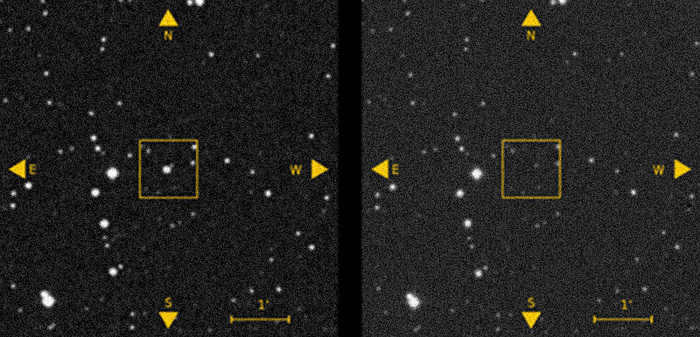
Take a look at the incredible phenomenon, a short time ago, there was a visible star in the image on the left, and now it has vanished. It is impossible to detect its presence using any available tools or methods. Scientists are perplexed by the mystery of where these stars go – could cosmic rays be responsible, or perhaps it’s the presence of space vessels, or even massive panels obstructing our view of the stars? The answers remain elusive, as distant as the Alpha Centauri star system.

Following that, I began contemplating, consumed three liters of coffee, and continued pondering.
Several individuals procured a telescope and commenced their search for stars with a magnitude of 23.
(And, miraculously, they managed to locate the specific star that had vanished. They managed to locate the specific star that had vanished.
The peculiar aspect is that stars do not vanish without a trace; if it is a massive star, it will explode into flames, leaving behind remnants.
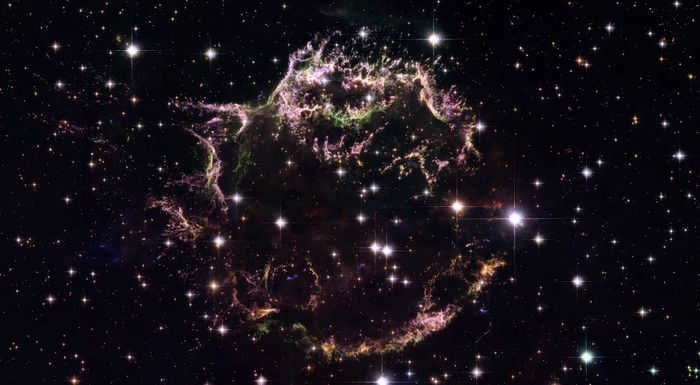
When a star with less mass comes to the end of its life, it goes through a transformation. It sheds its outer layers, creating a beautiful glowing cloud called a planetary nebula. At the center of this nebula, a white dwarf is left behind. This process is one of the ways in which stars can disappear.
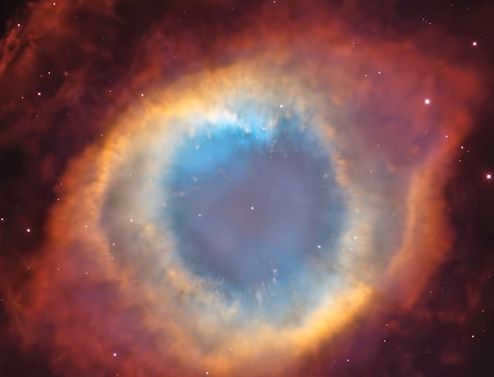
There is no definitive explanation for this phenomenon, but numerous theories exist. One theory suggests that Variable Stars play a role in this occurrence.
Over time, the brightness of any star can change to varying degrees. For instance, the Sun’s energy output fluctuates by approximately 0.1% during its well-documented eleven-year solar cycle. However, we can confidently state that the Sun remains a constant star.
Cepheids, a diverse and extensive family of variable stars, offer a perfect example of this variability. There are already over one hundred thousand known Cepheids in our galaxy alone, and they can experience energy fluctuations of up to 700% within a matter of days.
Below is a graph depicting the change in brightness of Cepheid V1 in the Andromeda Galaxy over a 31-day cycle.
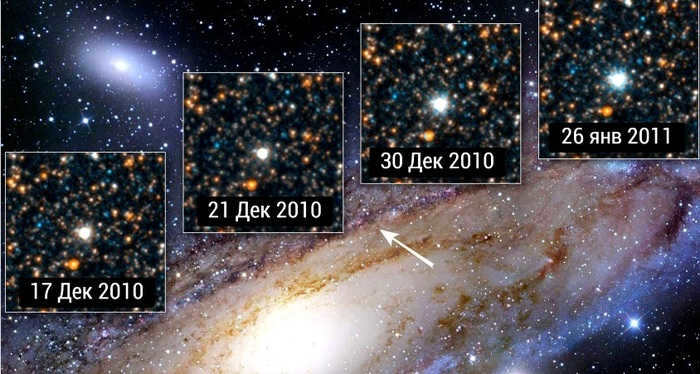

The burial place of only one dog can be found here, but what about the other dog that went to space? And how to bury it in the vacuum, we will find out soon.


It appears that a star of this kind could experience a rapid increase in brightness within a matter of days, rather than years. In fact, certain final reactions of the star take place within hours, allowing us to observe and capture them before and after the star’s demise. The time difference between the two photos can be as short as a week, during which the star shines brightly before losing mass and fuel, ultimately transforming into a small dwarf star 🙁
It turns out that we took a photo after the explosion, but shortly after, the brightness decreased by several magnitudes, rendering it undetectable by the telescope. This is because the photographs were taken with a setting of 23 star magnitudes, and the star appeared dimmer and practically vanished in our pictures.
However, there is no reason to be upset, folks! We may not be able to see it, but this star, despite losing some mass, still exists, patiently awaiting new observers :3
How do educational institutions overcome the language barrier when it comes to astronomy?
Professional astronomers have already addressed this issue – their conclusion is as follows: the inaccurate information is based on outdated images, where stars were mistakenly identified as defects, noise, or glitches in the images.
It’s simply Elon Musk repainting his satellites black, which is why they appear to be missing)))

Cassiopeia
The constellation Cassiopeia is located 80 km away from Minsk and was captured using a Nikon d80 camera with a Nikkor 50mm 1.8 lens.
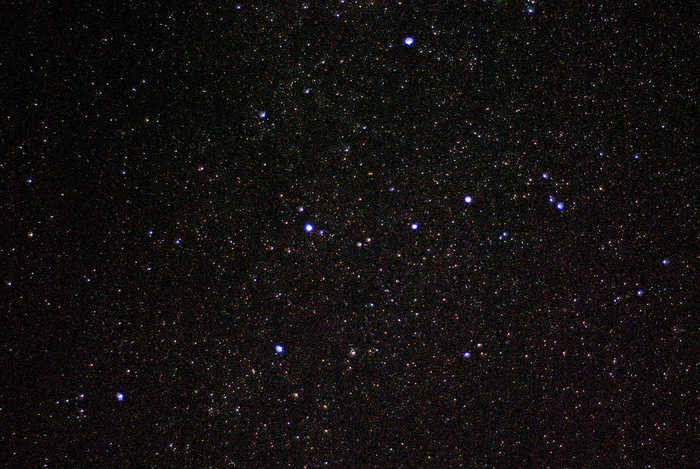
Andromeda Galaxy
I made my first attempt at capturing a photograph of the Andromeda Galaxy through a telescope, but unfortunately, it didn’t go as planned. During the 30-second exposure, a dark cloud obstructed the view, causing frustration. In the end, I decided to take a picture from a tripod using a 50 mm lens, which yielded much better results. If anyone has experience with astrophotography through a telescope, I would greatly appreciate any advice on how to do it correctly. I am currently using a budget-friendly Celestron 70lt az telescope.
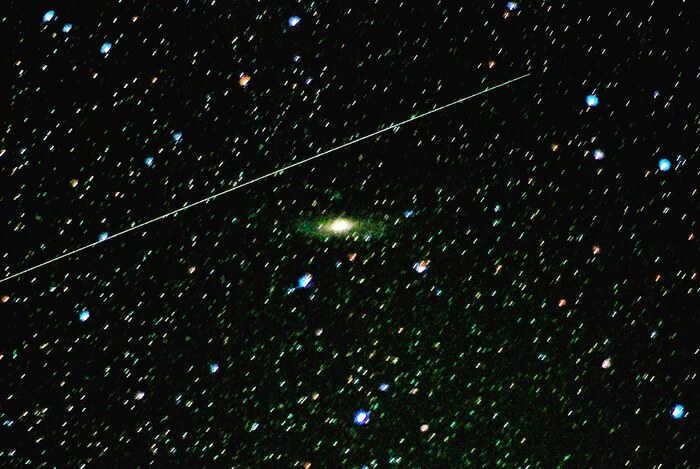
A bay in Cape Cod, Massachusetts is illuminated by the beautiful sight of the Milky Way.

Orion’s constellation location in which galaxy?
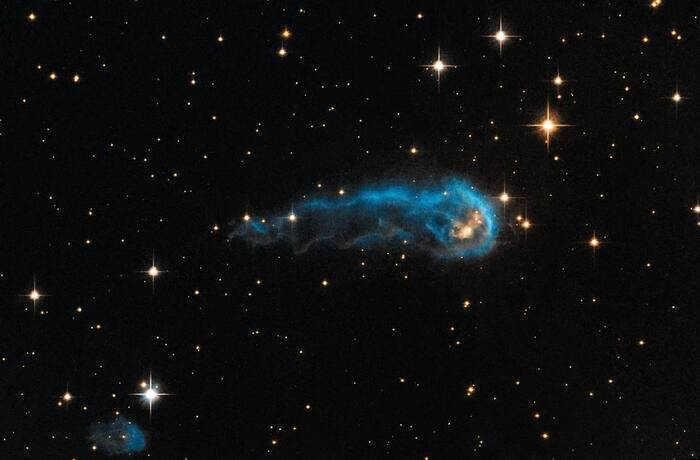
This particular Hubble image depicts a cluster of gas and dust that extends for a distance of one light-year. Situated 4,500 light-years away in the direction of the constellation Swan, this formation takes on a elongated shape due to the influence of ultraviolet radiation emitted by nearby luminous stars. Known as IRAS 20324+4057, this structure represents the initial phase of stellar formation.

A night in the summer
Signs of disaster on Mars. However, two pieces of evidence suggest Mars is still thriving
Based on the imagery provided by automated interplanetary stations and rovers, it can be deduced that a major catastrophe occurred on Mars, leading to the extinction of all life on the planet. However, signs of past water activity, such as riverbeds and evidence of massive floods, indicate that Mars was once a hospitable environment. The current landscape can be attributed to erosion caused by water.

The location displaying evidence of a water channel that spans approximately 100 kilometers.
It is possible that these formations are not actual rivers, but rather heavily eroded faults or channels originating from mud volcanoes. However, more details on this topic will be provided below.
The most evident indication of past occurrences

The Mariner Valley fault is a colossal fault in Mars.
Stretching for 4,500 kilometers and reaching depths of up to 11 kilometers, this canyon is a remarkable feature. To the west of the canyon lie five massive volcanoes, known as the Tharsis region, with the Olympus volcano standing as the tallest among them.
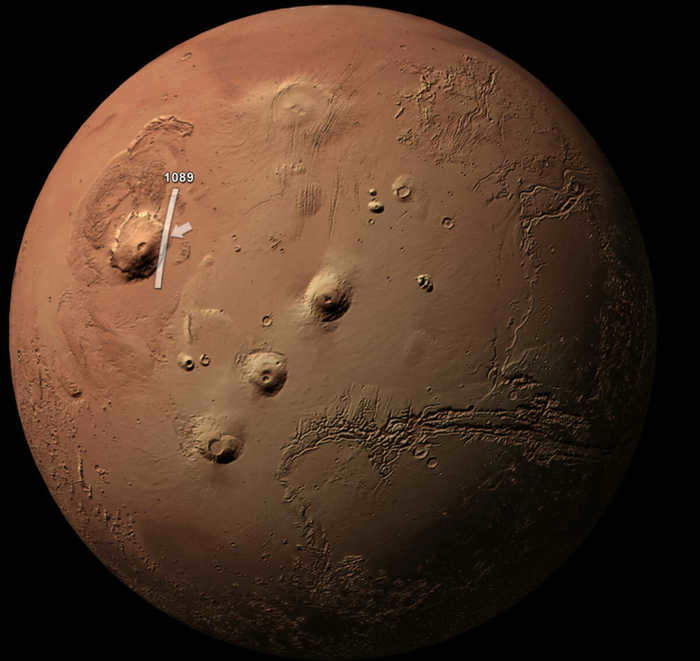
There is a line of three volcanoes on Mars, similar to the Hawaiian Islands on Earth. These volcanoes are named Mount Askrias (located in the north), Mount Peacock, and Mount Arsia (located in the south). They have heights ranging from 14 to 18 km. Northeast of Olympus Mons, there is a large shield volcano called Alba. This volcano is only 1.5 km tall above the plateau, but its diameter spreads up to 1300 km. It is possible that this volcano is a mud volcano, as the magma does not spread easily due to its high viscosity. The cone of Alba is not black like basalt.
The Olympus volcano reaches a height of 26 kilometers, making it a towering presence on Earth. Meanwhile, Mars is home to a collection of 20 volcanoes, with five of them being massive shield volcanoes that boast an impressive diameter at their base.
These volcanoes can be found in the Tharsis and Forcida provinces of Mars, regions that stand above the surrounding surface in terms of elevation.
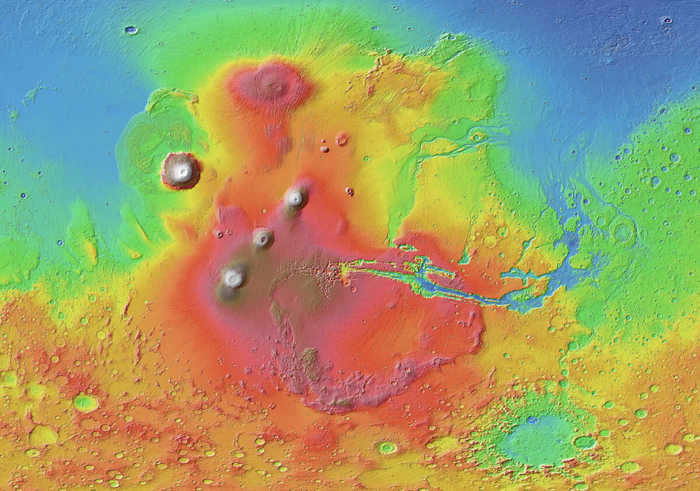

This hemisphere of Mars is depicted in an elevation map, revealing the presence of remnants from past catastrophes. The visible traces suggest the existence of ancient streams that once flowed from the Tharsis Province. One hypothesis posits that these mountains could be remnants of mud volcanoes, while the Tharsis Plateau might contain sedimentary deposits from mud outcrops. It is believed that these masses were deposited and subsequently eroded by water, potentially indicating a colossal Martian flood event.
If the internal structures of terrestrial planets are similar, it is plausible that Earth has also experienced similar phenomena, leaving behind traces and evidence of volcanoes.

However, it is assumed that the volcano caused the ocean to recede, with the water flowing up its slopes and creating these steep cliffs. Alternatively, the streams originating from the Tharsis region may have washed up against the base of Olympus Mons. It is important to note that the volcano was not erupting at the time.
In 2020, a study was published suggesting that the water channels on Mars were formed by streams from mud volcanoes. Could this be evidence supporting the mud hypothesis? Curiously, scientists seem reluctant to apply the same reasoning to Earth.


However, what could have caused such a massive phenomenon? If we turn our attention to the opposite hemisphere from the volcanic plateau, we will be greeted by an enormous depression:
The theory suggests that a colossal object crashed here. It is possible that, in addition to Phobos and Deimos, there was another moon orbiting Mars. Upon impact, the shockwave reverberated through the entire planet, creating fractures in the crust on the opposite side: thus, the Mariner Valley and the massive volcanoes came into existence.
Currently, no significant volcanic activity is observed on Mars, and it is believed that the water on the planet has evaporated, possibly due to the loss of a significant portion of its atmosphere. Additionally, there are no apparent signs of life on Mars. However, certain facts suggest that certain processes are still occurring…
Photographs taken by the AMS, which analyzed the Martian surface, show plumes emanating from the planet’s volcanoes. It is unclear whether these plumes are clouds or ash resulting from volcanic eruptions.

A plume originating from the Arsia volcano was discovered by the AMS Mars Express in 2018. These formations were also observed in 2009, 2012, and 2015, indicating that they are recurring phenomena. They are believed to be clouds that form before the onset of the Martian winter at these latitudes.
These clouds consist of water vapor, which originates from the Arsia volcano. It is possible that the release of hot gases from the volcano leads to the condensation of water vapor. The volume of water vapor is significant, as the plume extends for a thousand kilometers. In 2020, clouds once again appeared above the volcanoes:

Scientists have observed that clouds form simultaneously approximately once every 687 days.
As a point of comparison, here is a video of a volcanic eruption on Earth as seen from space:
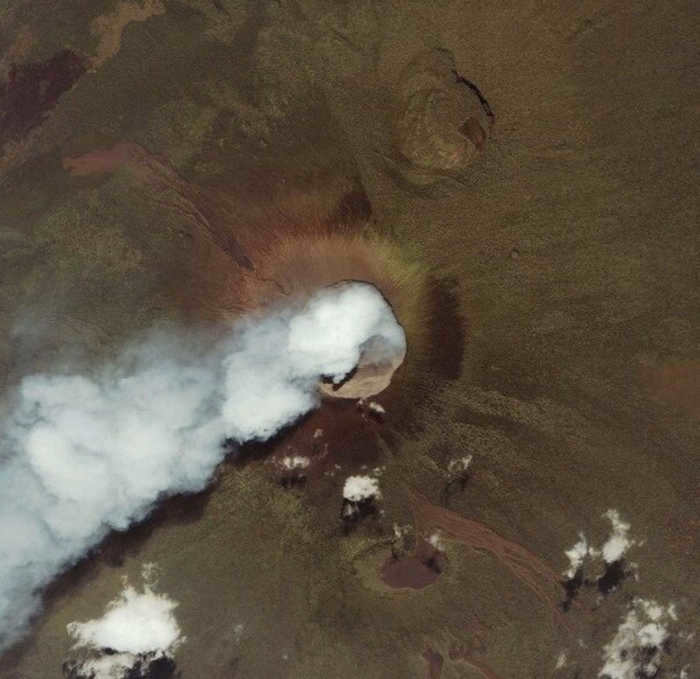
Along with emitting vapor, this volcano also ejects ash, resembling clouds.
Moreover, the volcano Arsia is intriguing due to the presence of caves discovered on its slopes:
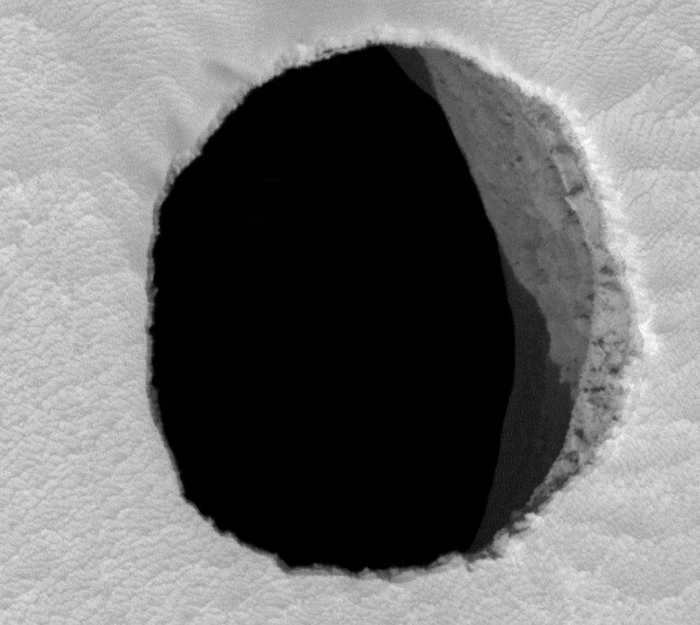

The collapse of the vaults in one of the caves is a phenomenon observed on Earth as well. These collapses are associated with the emergence of geothermal water, which leads to a decrease in pressure from the underground masses and the formation of caves.
Another interesting fact that indicates ongoing processes and degassing in the depths of Mars is the increase in oxygen concentration recorded by the Curiosity rover in 2019.
Mars’ atmosphere is primarily composed of carbon dioxide (CO2), nitrogen (N2), argon (Ar), oxygen (O2), and carbon monoxide (CO). However, during the rover’s exploration of Gale Crater, it observed significant fluctuations in the gas content.
According to the gas composition analyzer, the concentration of oxygen increases by 30% during the spring and remains at this level until Martian autumn. Afterward, it decreases and returns to its original values. A similar phenomenon occurs with methane. Normally, its concentration in Gale Crater is 0.00000004% of the total volume. However, during the summer months, it experiences a sharp increase of 60%.
One possible explanation could be that the ground is undergoing a thawing process, which is causing the release of trapped CO2 in the form of ice. This release is causing an increase in the concentration of gases that were present when Mars had a dense atmosphere.
Naturally, we would prefer to believe in the first scenario, that there is still some form of life remaining on Mars, even if it is in the form of bacteria or microscopic organisms like algae or lichens that are capable of producing oxygen. If the atmosphere were to return to Mars, it would rejuvenate the biosphere to some extent.
Enjoyed reading this article? Then check out my Telegram channel dedicated to space exploration Space is Within Reach where all the exciting action happens). Plus, there will soon be a giveaway of space-themed posters!

Video showcasing the presence of four exoplanets revolving around a star.
Astronomer Jason Wang has compiled 12 years worth of observations of the HR8799 system, which is situated approximately 133.3 light years away from our planet, into a single captivating video. The remarkable footage has been created using data collected from the Keck Observatory located in Hawaii.
The HR8799 system holds significant interest as it marked the first instance in which astronomers were able to directly witness the existence of multiple exoplanets simultaneously.

An extraterrestrial celestial body that has previously traversed our solar system
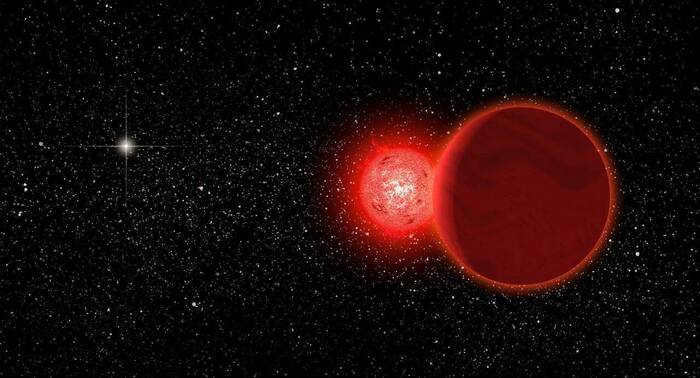

Scholz’s star is a diminutive red dwarf with a mass that is only 8 times smaller than that of the Sun.
Its history is quite intriguing. Currently, it is located 20 light years away. However, a mere 70,000 years in the past, Scholz’s star narrowly avoided a collision with the Sun, coming within a distance of 0.8 light-years (or 52,000 astronomical units). This is significantly farther than Gliese 710 is projected to travel. Scholz’s star grazed the outer reaches of the Oort cloud, potentially perturbing comets and altering their orbital paths.

NGC 1232: The Extraordinary Spiral Galaxy.
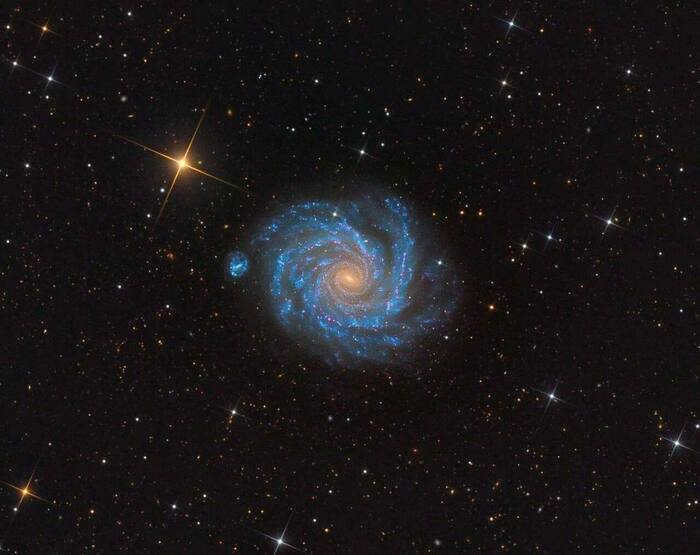
NGC 1232 Galaxy, an astonishing spiral galaxy, is located at a staggering distance of approximately 66 million light-years away. Thus, the light that we perceive from this mesmerizing galaxy today actually originated when the last dinosaurs roamed the Earth.

Extraterrestrial Observers on the Nearest Exoplanet.
Imagine a scenario where intelligent life exists on the nearest exoplanet within our habitable zone, and its advanced inhabitants possess technology similar to ours. If they were observing our star at this very moment, what would they perceive?
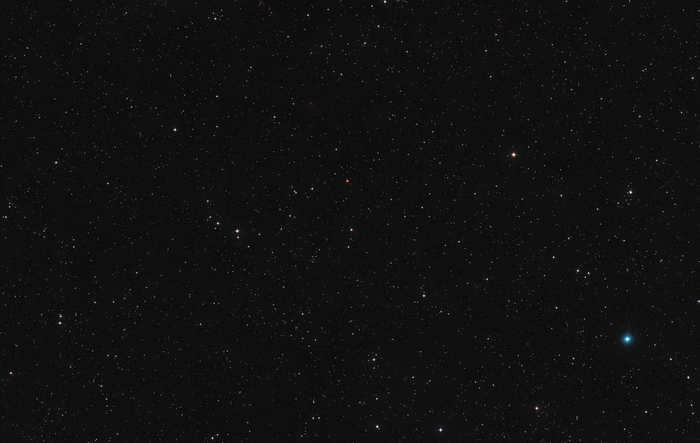
There is nothing in this picture that reveals any information about our Sun as a potential star system for life. It is just one of many dots in the image. Interestingly, the orange dot located just above the center is actually a star called Ross 128, which is located at a distance of 0.11 light-years from our Sun.
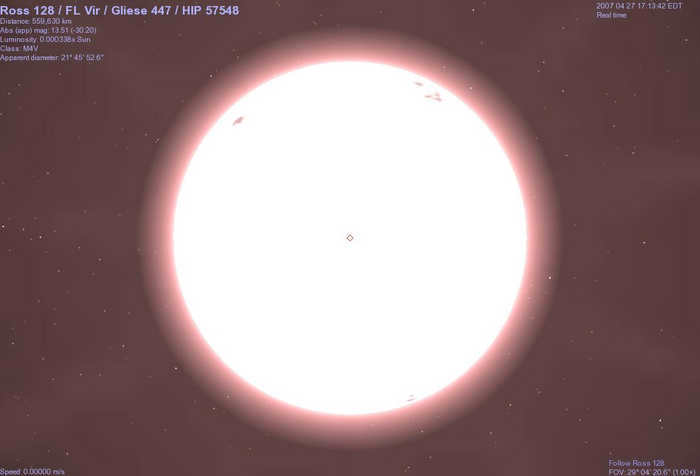
It is an incredibly tiny and solitary star, a faint and diminutive dwarf with a weight of just 0.15 solar masses. However, this star possesses an extraordinary feature as it hosts an exoplanet called Ross 128 b that orbits around it. What makes this exoplanet particularly fascinating is its placement within the habitable zone, a region where all the necessary conditions for the emergence of organic life are present! The artist’s depiction below showcases its appearance:
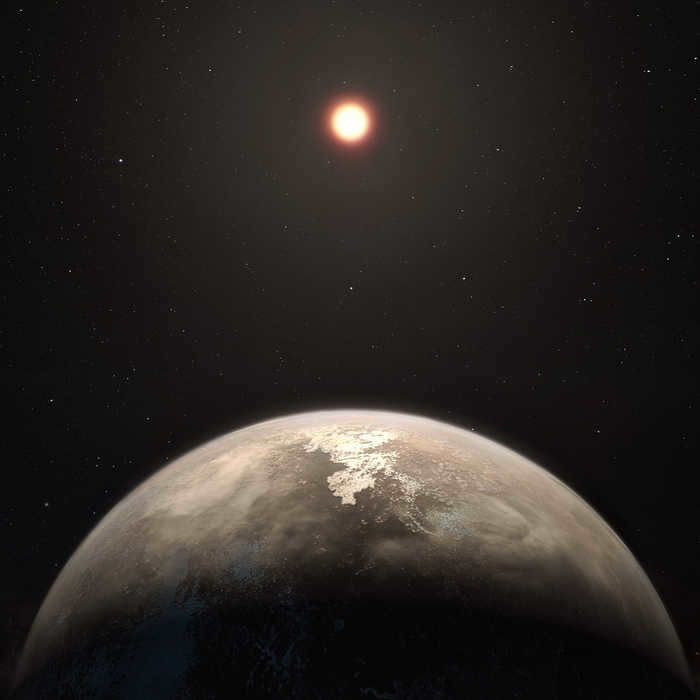
The star that this exoplanet revolves around has a period of 10 days, and the temperatures on the planet’s surface vary from -60 °C to +21 °C. This temperature range suggests the possibility of liquid water, which is essential for supporting life similar to that found on Earth!

However, let’s shift our attention back to the extraterrestrial astronomers. Let’s imagine that astronomers residing on a planet 11 light years away from us possess similar observing capabilities as we do. If they were to direct their ordinary telescopes towards our sun, they would not witness anything particularly noteworthy. Nevertheless, what if we consider the aspect of radio transmissions? The film Contact has convinced us that it is plausible for aliens to be intercepting our radio transmissions.

Regrettably, it is highly improbable. Additionally, the issue of distance arises. Extraordinarily vast distances. All radio and television signals that have been transmitted over the past century have been gradually fading away in the vastness of interstellar space. For a television signal to reach Ross 128 b, an enormous amount of financial resources and energy would be required to sustain the amplification of said signal.
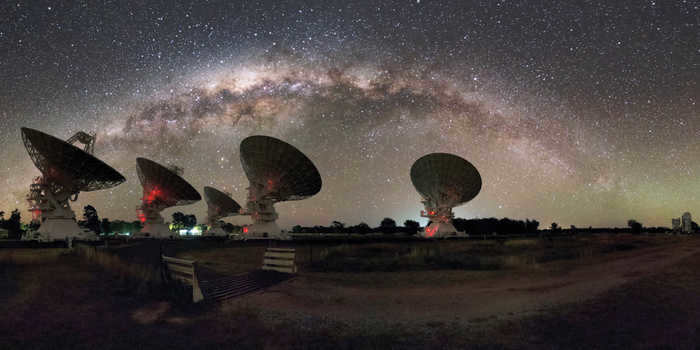
However, it is highly unlikely that the residents of a different planet would have any interest in watching our political shows or purchasing the promoted products, making it an extremely inefficient endeavor.

With the advancement of technology, the leakage of radio signals into space is decreasing as we transition to cable TV and lay massive fiber-optic cables on the ocean floor. However, there is no need to worry about aliens not being able to watch our TV shows. These radio signals are not the most powerful ones emitted by Earth. They have been overshadowed by the radar beams of early warning systems.

These systems were created during the Cold War era as a result of human conflict. They consisted of a network of ground and air stations that constantly emitted powerful beams into the atmosphere. These beams would often bounce off the ionosphere, and people would eagerly monitor the echoes of these signals in search of any indications of enemy activities.

The radar signals emitted from Earth traveled through space, potentially reaching nearby exoplanets that happened to be in the path of the beam. However, numerous factors would need to align for this to occur.
Do you recall the Arecibo Observatory?
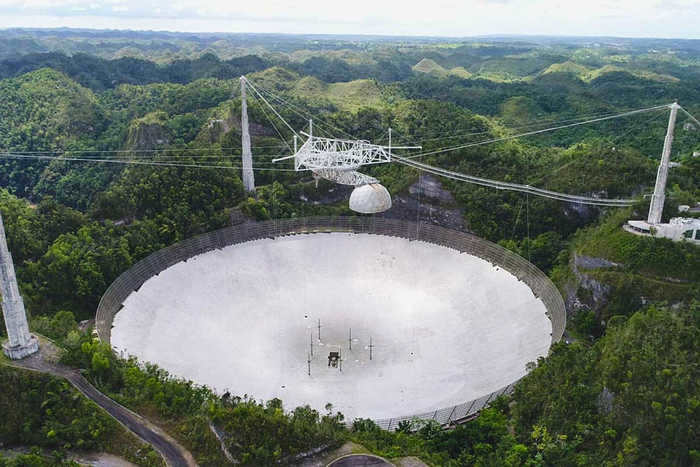
The enormous dish located in Puerto Rico has the potential to operate as a radar transmitter, utilizing its signal to bounce off objects in close proximity such as Mercury and the asteroid belt. Essentially, it serves as a powerful flashlight that we employ to illuminate planets for improved visibility.
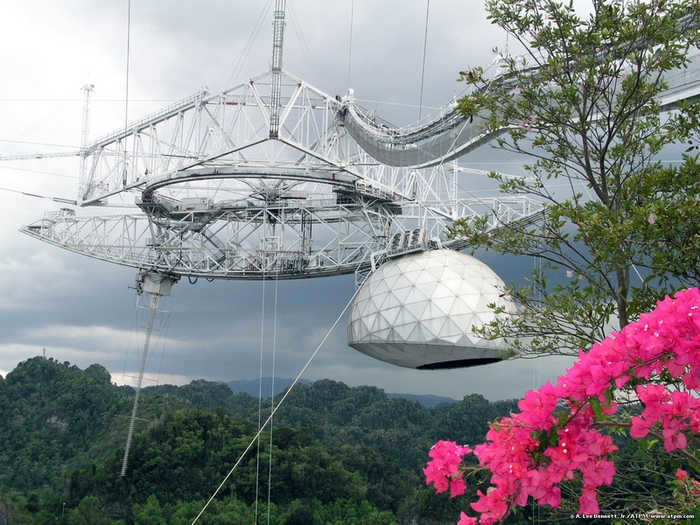
In the past, this massive transmitter would occasionally send out a signal in a narrow beam. If, by chance, an exoplanet happened to intercept the beam and their receiving antenna happened to be pointed in our direction, they would only receive a brief burst of energy in the radio frequency before it went silent (similar to the famous WOW signal).

Indeed, the Arecibo Message, a radio transmission dispatched on November 16, 1974 towards the globular star cluster M13, positioned 25,000 light-years distant in the constellation Hercules, remains firmly ingrained in our memory.

The duration of the message was 169 seconds. This implies that in order to receive and decode the signal correctly, both antennas would need to be precisely directed towards each other. However, due to the planetary rotation and the vast distances involved, this is not practically achievable. Hence, the hypothetical extraterrestrial beings on Ross 128 b. Ross 128 b observing Earth would not be able to intercept us using radio antennas.
Now, let’s shift our focus to visible light. Our Earth appears as follows from a distance of 5.9 billion kilometers:
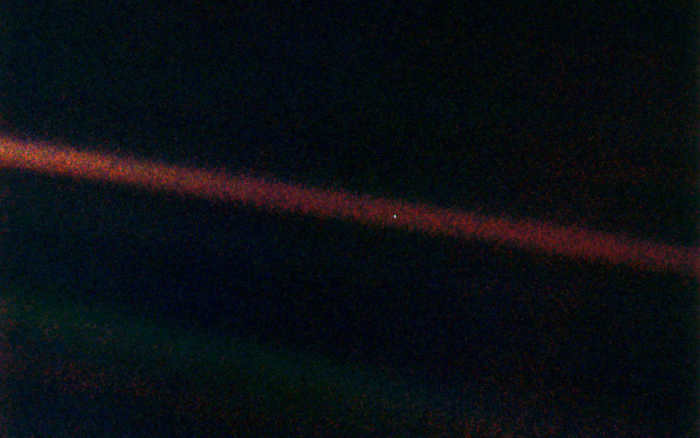
The Sun is incredibly luminous, and its brilliance casts light upon the Earth. Some of this light is reflected back into the vastness of space, creating what is known as “Earthshine”. Another portion of this light approaches our planet closely and traverses our atmosphere before continuing its journey towards the distant stars. Both of these phenomena have the potential to be detected from an exoplanet, and we are currently utilizing this process to gain further insights into the atmospheres of these celestial bodies.
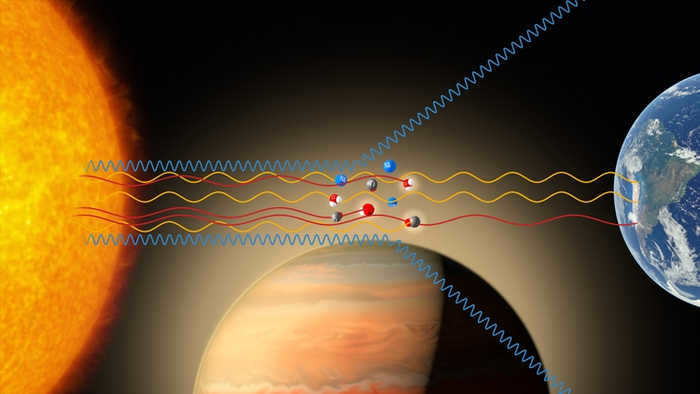
The findings of extraterrestrial astronomers from the planet Ross 128 b may not provide direct insights into humanity, but if they have been observing Earth for a considerable period, they would have gained valuable knowledge about our atmosphere by studying its reflectivity. Through this, they would likely have deduced the nature of our water cycle and the peculiarities of our oxygen-rich atmosphere. This is similar to the gas giant WASP-39 b:
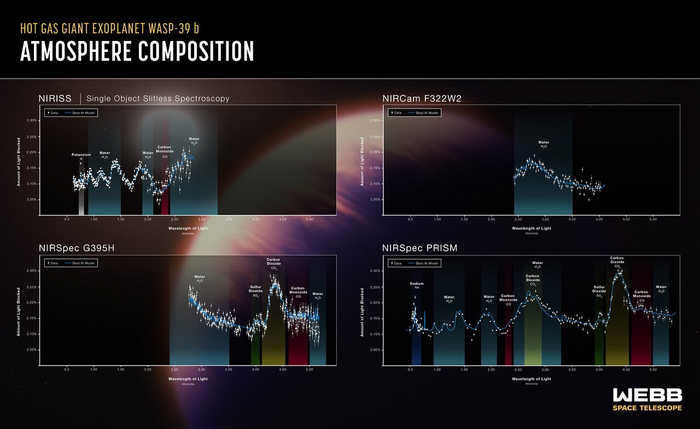
Ultimately, it may not be us who sends the most distinct signal from Earth, but rather the seaweeds that have transformed our planet over countless millennia and alter the transmissions we emit into the cosmos.
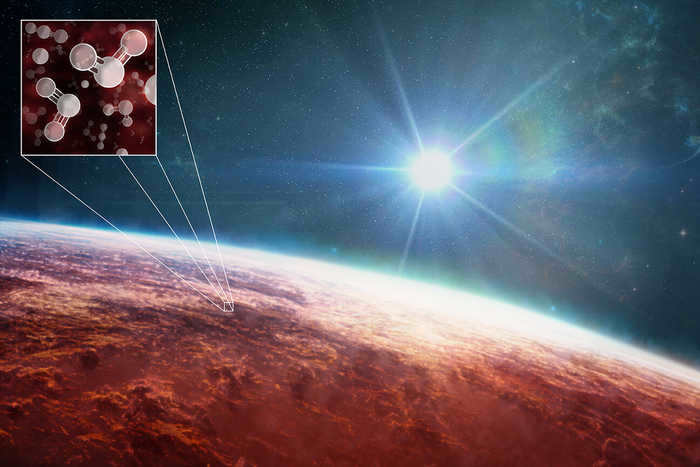
Undoubtedly, if we desired to transmit a more distinct message, we would be capable of doing so. However, transmitting a radio signal presents a predicament: the recipient must be attentive to it upon its arrival. In simpler terms, the extraterrestrial beings must maintain a receiving antenna directed towards us constantly.
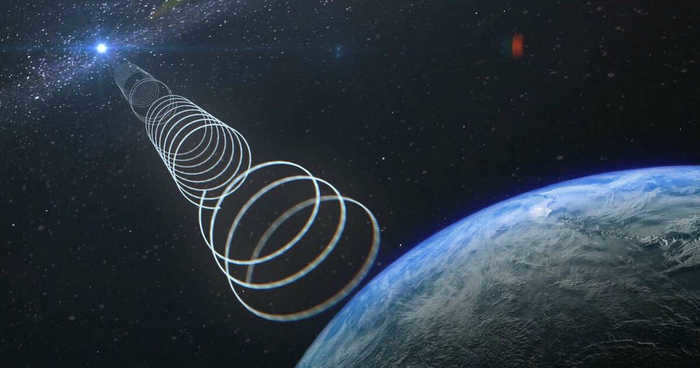
However, there are alternative methods to capture attention. By utilizing ion engines, a pulsed nuclear engine, or by strategically utilizing a gravity slingshot, we possess the capability to dispatch a probe from our solar system towards Ross 128 b at a velocity sufficient to reach it within a few tens of millennia. In the event that we manage to devise a guidance system that can endure such an expedition (which will undoubtedly be a challenging endeavor), we could utilize it to traverse to any potentially habitable planet.
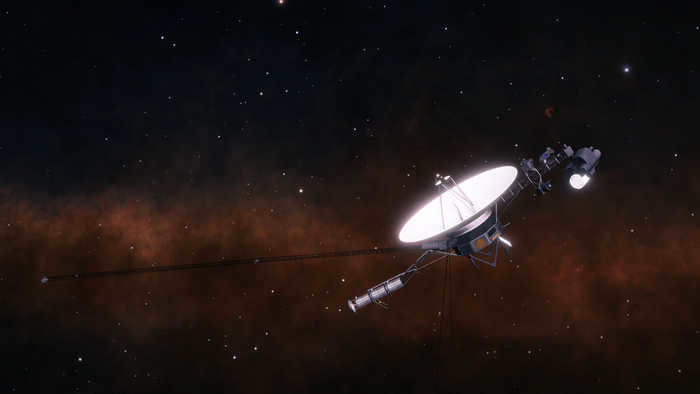
Indeed, we would require additional fuel in order to complete a landing. However, the primary objective is for these extraterrestrial astronomers to detect our presence, isn’t it?
P.S. I have been closely observing the developments on peekaboo for quite some time now. Initially, there was a revolution where everyone was striving for high ratings and achievements by posting meaningless content. Then came the optimization, where only the number of likes was displayed. Unfortunately, many talented content creators have left. However, I will remain active on peekaboo and will continue to share updates about my observatory and space for those who share my interest. I maintain a blog about the observatory on Telegram and believe that it is more suitable for sharing specific content. I am grateful to everyone who has stayed and continues to contribute engaging and insightful content.
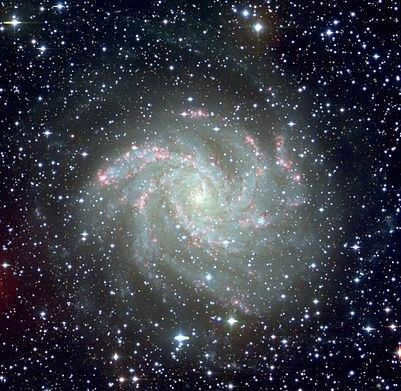
The star N6946-BH1, situated in the spiral galaxy NGC 6946, has suddenly vanished from existence. Scientists refer to NGC 6946 as the “Fireworks galaxy,” which is located 22 million light-years away from our planet Earth.
The precise cause of this disappearance has not yet been determined, but scientists have proposed several hypotheses. Back in 2009, astronomers began closely observing this star. They were hopeful to witness a brilliant celestial explosion, but instead, the star began to dim and eventually disappeared from our view. The most prevalent hypothesis among scientists is that the star did not explode as a supernova, but rather transformed into a black hole.
About the celebrity
N6946, indexed as bh1, is a star that no longer exists. It was classified as a red supergiant and located in a different galaxy called NGC 6946. This star was a single star and belonged to the spectral class of red supergiants. Its mass was 25 times that of the Sun and it was located 20 million light years away from Earth. The star’s coordinates were at RA 20:35:27.56 and Dec +60:08:08.29. On July 2, 2005, the brightness of the star was determined based on its apparent stellar magnitude in different color bands. It was found to have a magnitude of P = 21, c = 21, B = 22, and y = 23. Prior to a known optical flare, this star was about 100,000 times brighter than the Sun. However, after the explosion, it became 5000 times brighter than the Sun in infrared radiation. Astronomers have been observing this celestial object for several years using both ground-based and orbital telescopes. In the spring of 2009, the star’s brightness exceeded several million times that of the Sun, but then it suddenly disappeared from view. It can now only be observed in the middle and near-infrared range, and its brightness is rapidly decreasing. Scientists have concluded that this event was not a true supernova explosion and have referred to it as a “failed supernova”. This term is now widely accepted in the field of science.
One hypothesis gaining popularity suggests that the star’s core collapsed, leading to the creation of a black hole.
Previously, it was thought that stars needed to go through a supernova phase before becoming black holes. However, recent scientific evidence suggests that in certain cases, this “transition stage” may not be necessary. Up to 30 percent of massive stars could undergo a “silent” transformation into black holes. This discovery may provide insight into why astronomers rarely observe the outbursts of the most massive stars.
The initial signs of the phenomenon
By utilizing images from the archive featuring N6946-BH1, astronomers were able to capture subsequent images of the elusive “stellar absence”. In collaboration with the Hubble scientific association, researcher Gerke successfully accomplished this task.
Indeed, the star in question had vanished! The aforementioned scientific team’s photos provided concrete evidence to support this claim. These images marked the first time that scientists were able to detect the telltale signs of a black hole’s formation, which remained invisible in visible light but became apparent in the infrared section of the electromagnetic spectrum. It became apparent that these signs persisted from the moment the black hole formed in the autumn of 2009 until October 2015, when scientists observed them for the final time.





